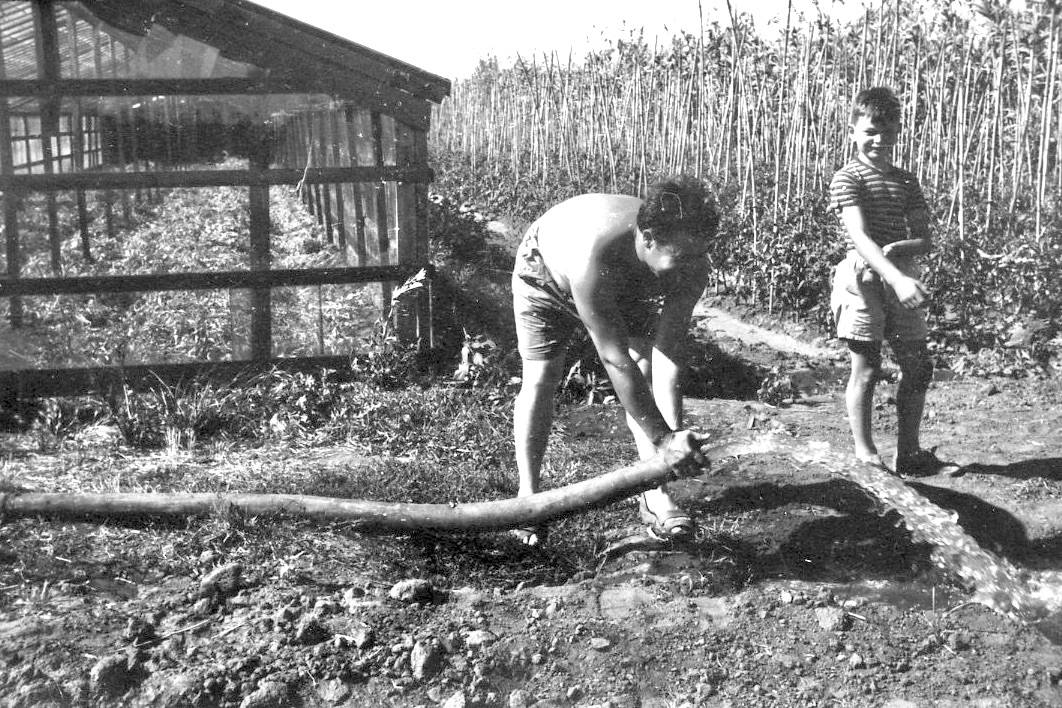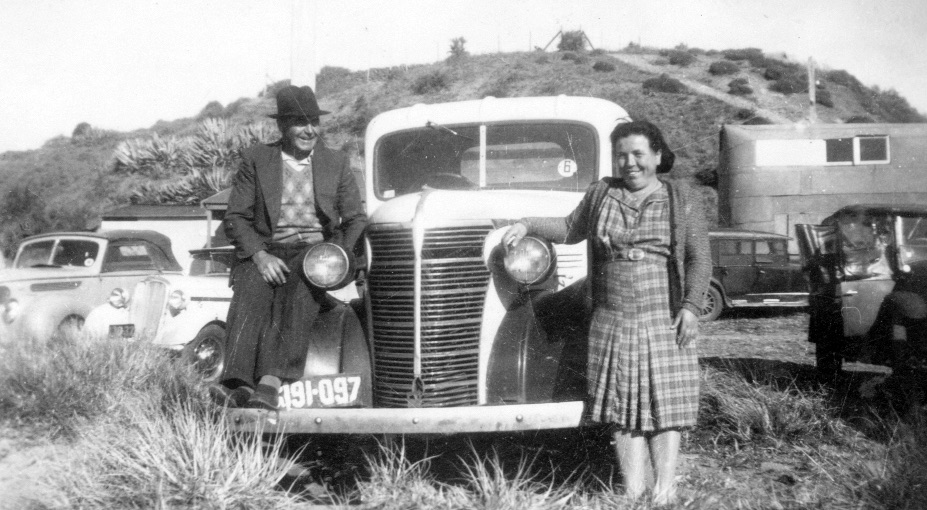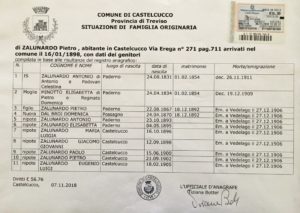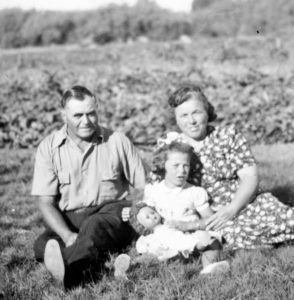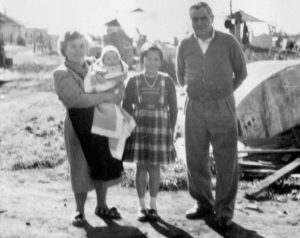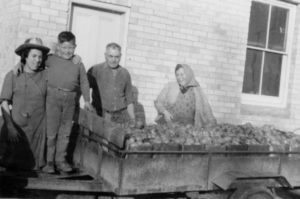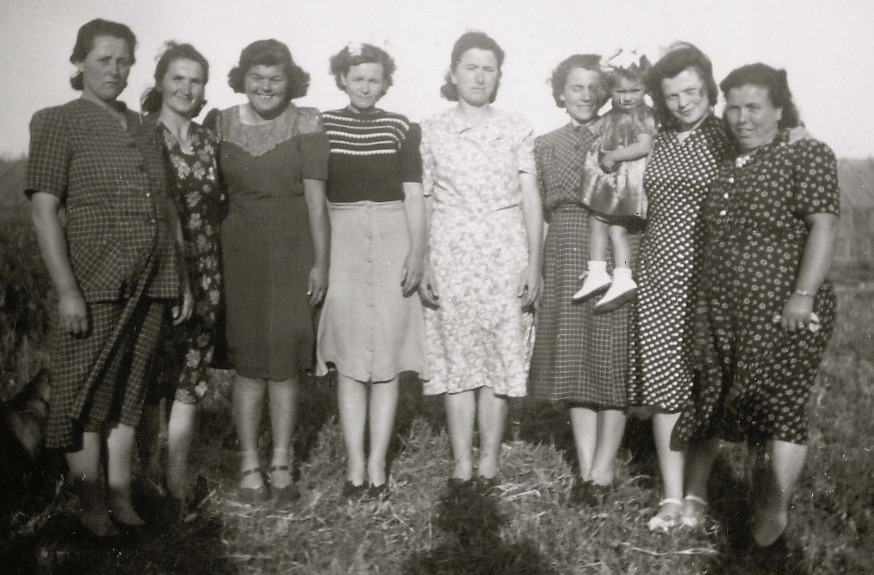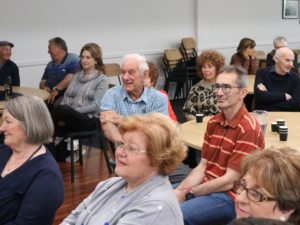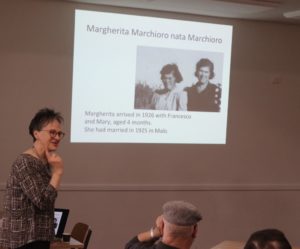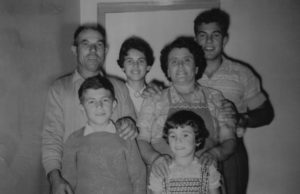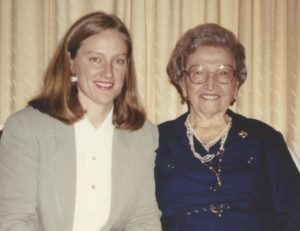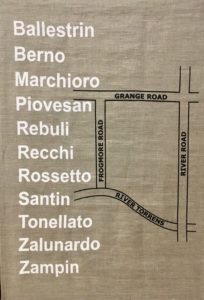Most of the Veneto market gardener families had large numbers of glasshouses on their land where they grew tomatoes and beans. Before chemicals were introduced to manage problems with disease, the market gardeners had to shift the glasshouses to ensure the soil was not infected.
The following excerpts from oral history interviews provide glimpses of the work in the glasshouses.
Johnny Marchioro, 28 July 2008
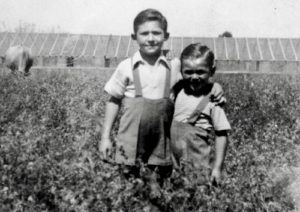
Single glasshouses [were] only 15 foot wide and 112 foot long … The middle of the glasshouse would only be about 6 foot 6, the side would be about 4 foot 6 … every two years they used to pull them down …
Frankie Ballestrin, 12 December 2008, 14 January 2009
… we used to change glasshouses at the age of 12, 13 … My cousin and myself, homework … was to drill holes and put up a row of posts each night we come home from school. Our parents would prepare the rails on the grounds and that was the start of setting up your glasshouse. And we put the rail in, then they’d have the rail on top of it and then we’d come home and nail the rafters in. You know, they’d show us what to do, sort of thing. And then carry on from there. And then slide up the glass and all the rest. It wasn’t easy.
They were very low in those years … They were only two glass high. You could barely get in with a tractor …. Before, we used to dig them by hand. We used to dig them by hand with a fork.
Anna Santin nee Mattiazzo, 17 April 2013
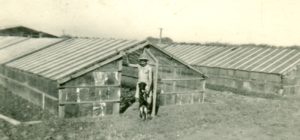
The crops used to finish around about December. January, February we used to, you had to take down all the glasses and put them in boxes so they could shift the posts in a different part, and the men used to, the men used to be inside with us women on the outside pushing the glasses up. Oh, it was very, very hot … you’d burn your hands just about, and it had to be done until after, a few years afterwards they used to inject the dirt in the glasshouses so they didn’t have to be shifted anymore.
Sandra Semola nee Zampin, 27 April 2017
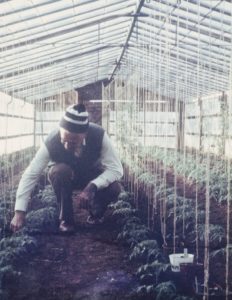
Depending on the weather, if it was hot, we used to get up very early, about 3:00, 3:30 or 4:00 o’clock sometimes, depending what we were doing … If it was going to be a hot day, we used to get the water, … watering the glasshouses or whatever was outside. And then — we did as much as we could and when it got too hot, we had to stop because the water was sinking away, and as soon as it started cooling down, we used to start watering again. So I’d be watering till late at night.
Mel Recchi, 18 June 2014
You know, I still remember working in the garden with him [Dad], and if it was Christmas day and it was 40 degrees, hot, he’d be out working, Christmas Day. If it was Easter time, Easter Sunday, if the crops needed to be watered, he’d be out watering his crops. So he couldn’t afford to, it was the same with anybody with glasshouses, and you had a crop to pick that day, you had to work that day.
Madeleine Regan
8 December 2019
I ricordi delle serre
La maggior parte delle famiglie di orticoltori veneti avevano le serre dove coltivavano pomodori e fagioli. Ogni tanto gli orticoltori muovevano le serre da un posto all’altro prima che si fumigava le verdure per evitare le malattie.
Alcune persone che ho intervistato hanno descritto uno scorcio del lavoro che si faceva trasferendo le serre.

Johnny Marchioro il 28 luglio 2008
La serra era larga solo circa 4.5 metri e lunga 3.6 metri. Il centro della serra sarebbe di circa 2 metri e il lato era 1.4 metri. Ogni due anni le smontavano.
Frankie Ballestrin, il 2 December 2008, il 14 gennaio 2009
Quando avevo 12, 13 anni smontavamo le serre. Il compito mio e di mio cugino era quello di scavare i fori per mettere le stecche in fila ogni sera dopo scuola. I nostri genitori allora mettevano le stecche nel terreno e quello era il principio per sistemare e muovere le serre. Ci mostravano cosa dovevamo fare e si continuava lavorare. Non era un lavoro facile.
In quei primi anni, le serre erano molto basse. Erano solo due vetri a lato. Era molto difficile lavorare la terra nella serra. In principio dovevamo scavare la terra con il forcone. Era un lavoro manual.
Anna Santin nata Mattiazzo, il 17 aprile 2013

Le verdure finivano circa in dicembre. In gennaio, febbraio dovevamo scomporre i pezzi di vetro, e metterli in cartoni così potevamo trasportarli dove c’erano le stecche da un’altra parte. Gli uomini erano dentro le serre e le donne di fuori così si poteva spingere i pezzi di vetro in sù.
O, era molto, molto caldo … mani si bruciavano … anni dopo si fumigava il terreno così le serre non si dovevano muovere.
Sandra Semola nata Zampin, il 27 aprile 2017

Si dependeva dal clima. Se era caldo ci si alzava molto presto – certa volte alle 3:00, 3:30 o 4:00 dipendendo da quello che si doveva fare …. Se era una giornata calda dovevamo incominciare ad innaffiare molto presto nelle serre o le verdure nell’orto. Si faceva quello che si poteva prima che diventasse troppo caldo. Quando incominciava a rinfrescarsi si ricominciava ad innaffiare di nouvo. Molto spesso in estate dovevo innaffiare la notte tardi.
Mel Recchi, il 18 giugno 2014
Ricordo ancora quando lavoravo nell’orto con mio padre. Se era il giorno di Natale ed faceva 40 gradi, mio padre era lì che lavorava. Il giorno di Natale! Il giorno di Pasqua, se le verdure avevano bisogno di essere innaffiate mio padre era lì ad innaffiare. Non poteva lasciare perdere. Era la stessa cosa per tutti quanti che avevano serre. Dovevi lavorare per poter raccogliere le verdure.
Madeleine Regan
il 8 dicembre 2019
